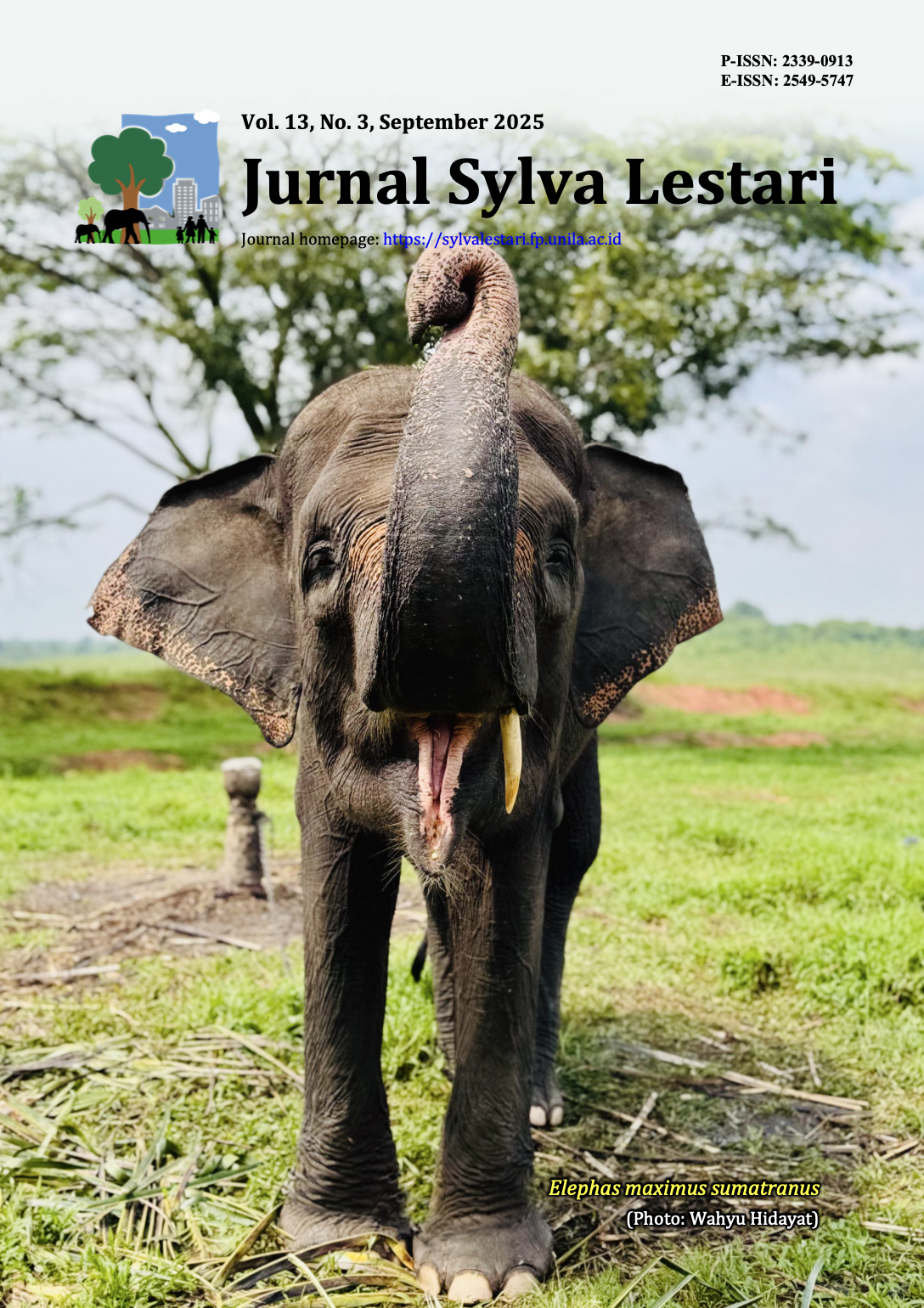Three Decades of Forest Biomass Estimation in Southeast Asia: A Systematic Review of Field, Remote Sensing, and Machine Learning Approaches (1995–2025)
DOI:
https://doi.org/10.23960/jsl.v13i3.1162Abstract
Aboveground biomass plays a pivotal role in estimating tropical forest carbon stocks, particularly in Southeast Asia, a region rich in biodiversity but threatened by deforestation and land-use change. This systematic review analyzes 71 peer-reviewed studies published between 1995 and 2025, selected from an initial pool of 8,509 articles. The review aims to evaluate methodological developments and performance across three major approaches: field-based and allometric models, remote sensing including Unmanned Aerial Vehicle (UAV) platforms, and Machine Learning (ML) with data fusion, within key tropical forest countries: Indonesia, Malaysia, and Vietnam. These countries were selected due to their high forest cover, rapid land-use change, and central roles in the implementation of Reducing Emissions from Deforestation and Forest Degradation (REDD+). Field-based models, particularly those calibrated locally, consistently produced high accuracy, with R² values generally ranging from 0.80 to 0.96. Remote sensing techniques, particularly the integration of airborne LiDAR and optical–SAR, demonstrated strong predictive performance (R² > 0.85) and relatively low Root Mean Square Error (RMSE), typically below 30 Mg/ha. ML approaches such as Random Forest, Support Vector Machines, and LightGBM also achieved competitive results, with R² typically between 0.75 and 0.85 and RMSE below 40 Mg/ha when trained on high-quality input data. Mangrove and dipterocarp forests emerged as the most frequently studied ecosystems. While methodological innovations are evident, notable gaps remain in model harmonization and representation of ecosystem diversity. The review recommends integrating species-specific allometric models with remote sensing and machine learning pipelines, supported by open-access datasets, to enhance national forest monitoring systems and REDD+ readiness across Southeast Asia.
Keywords: aboveground biomass, allometric, biomass estimation, carbon stock, South East Asia
Downloads
Downloads
Published
How to Cite
Issue
Section
Statistics
 Abstract views: 494 times
Abstract views: 494 times PDF downloaded: 380 times
PDF downloaded: 380 times
Metrics
License
Copyright (c) 2025 Sitti Latifah, Seca Gandaseca, Mansur Afifi, Andrie Ridzki Prasetyo, Miftahul Irsyadi Purnama, Lalu Rizky Aji Kertalam, Roni Putra Pratama

This work is licensed under a Creative Commons Attribution-NonCommercial 4.0 International License.
Authors retain copyright and grant the journal right of first publication with the work simultaneously licensed under a Creative Commons Attribution-NonCommercial 4.0 Licence that allows others to share the work with an acknowledgement of the work's authorship and initial publication in this journal.
Authors are able to enter into separate, additional contractual arrangements for the non-exclusive distribution of the journal's published version of the work (e.g., post it to an institutional repository or publish it in a book), with an acknowledgement of its initial publication in this journal.
Authors are permitted and encouraged to post their work online (e.g., in institutional repositories or on their website) prior to and during the submission process, as it can lead to productive exchanges, as well as earlier and greater citation of published work (See The Effect of Open Access).









